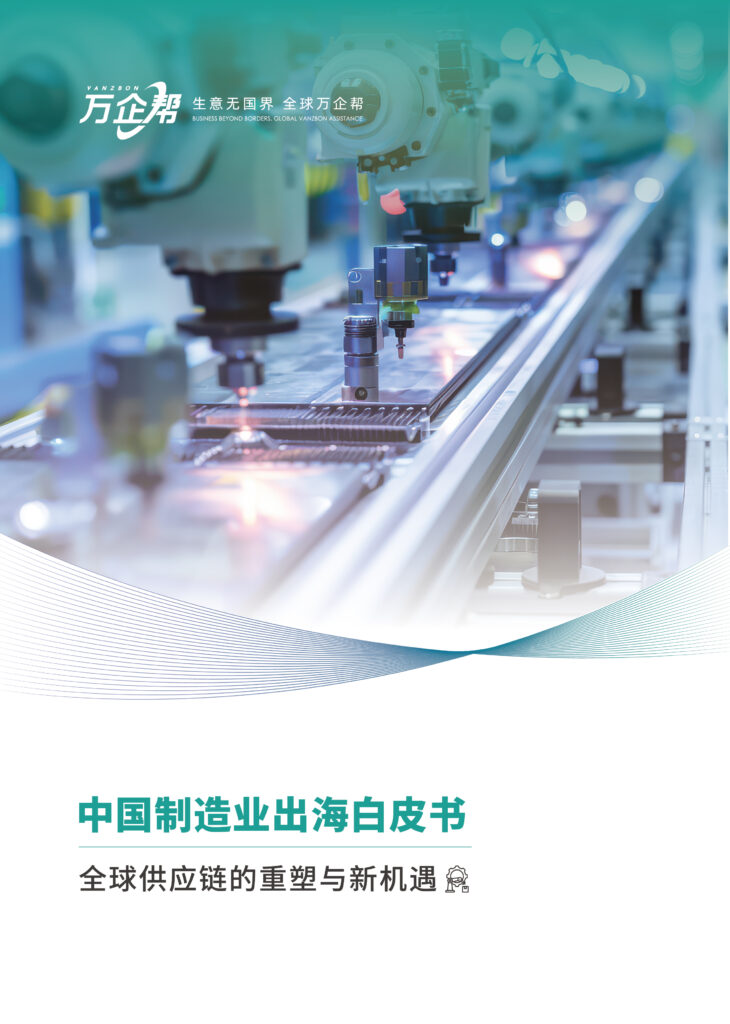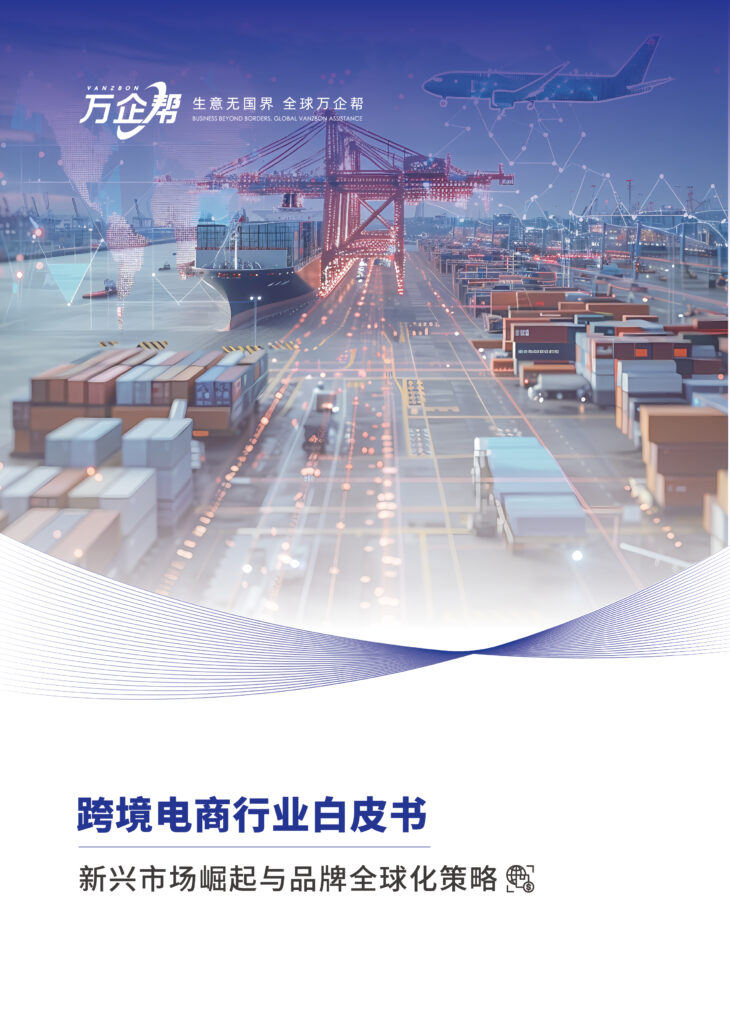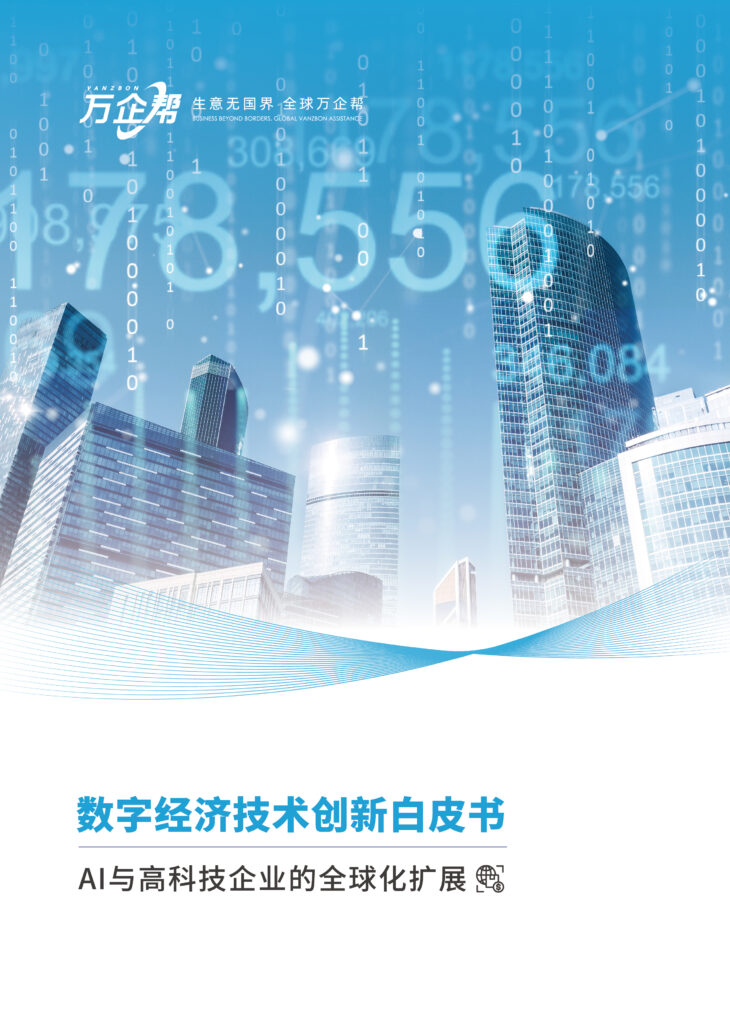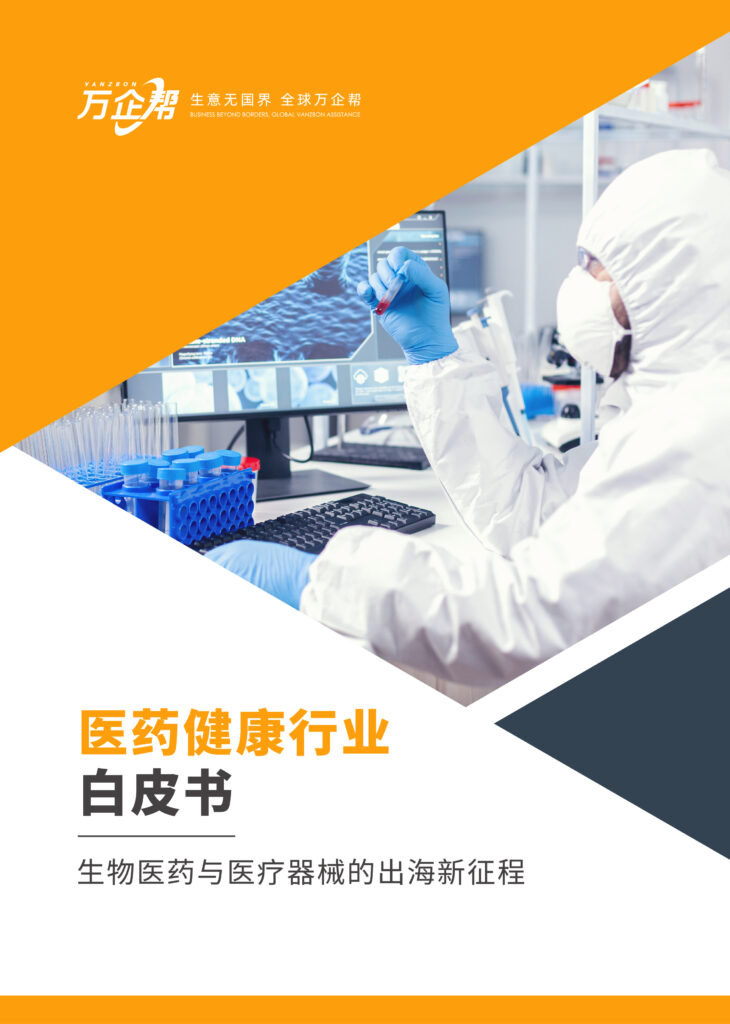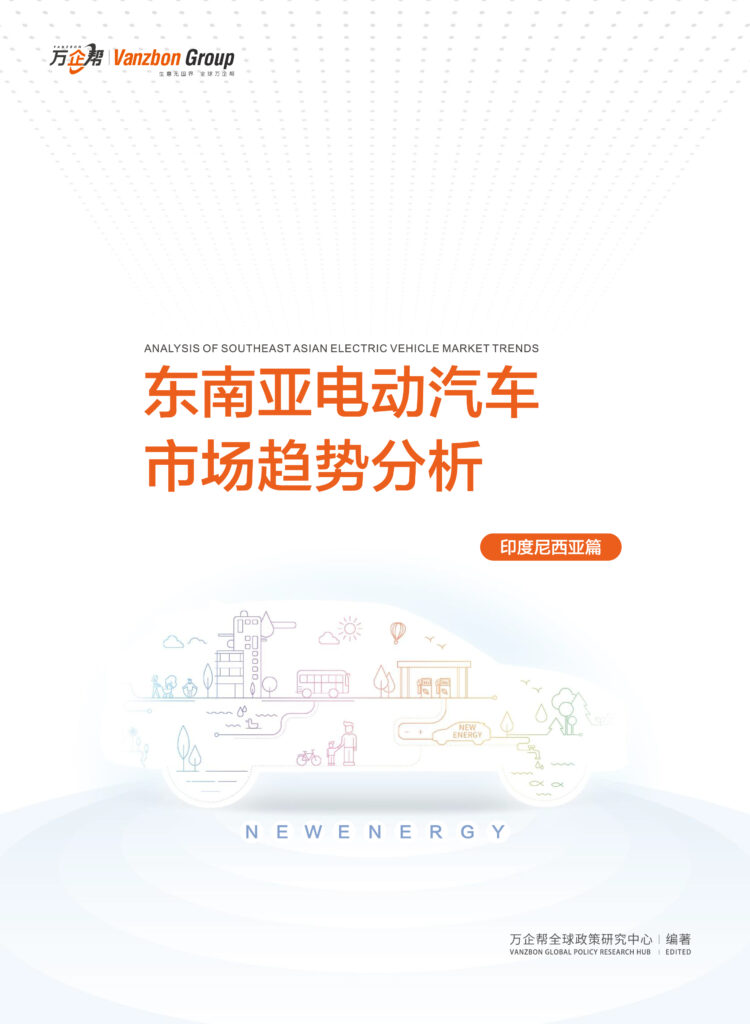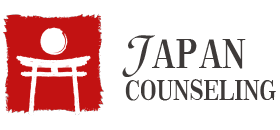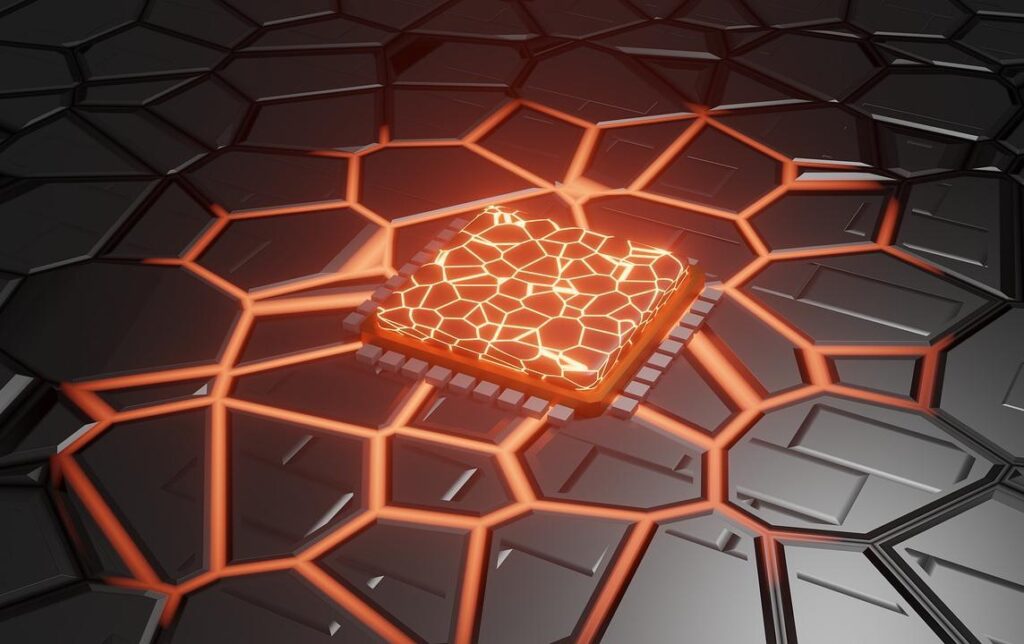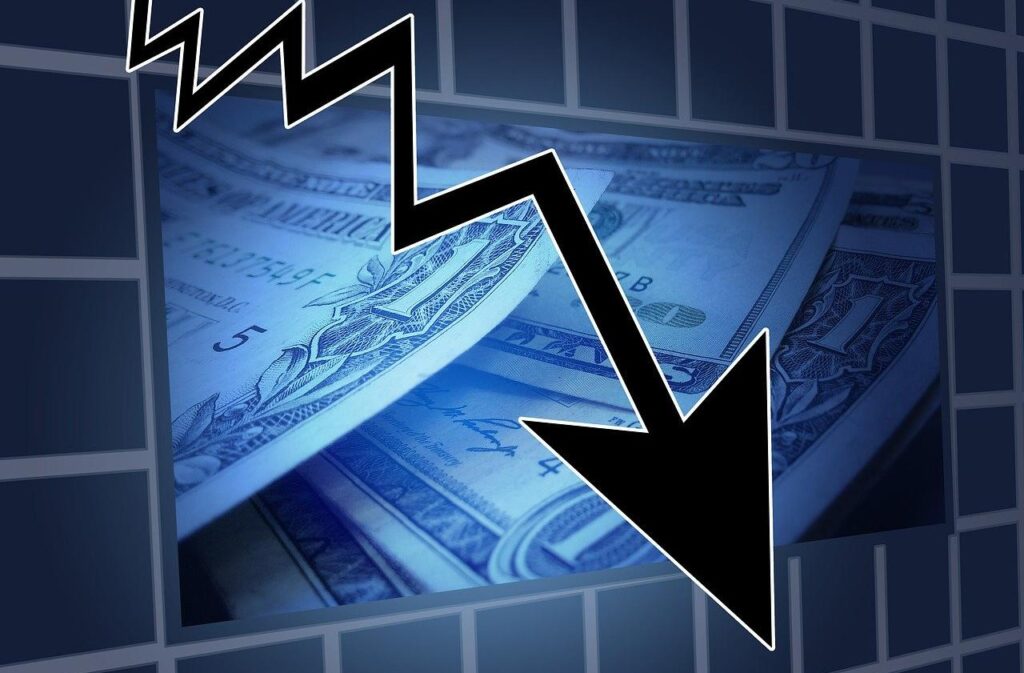As an island country located in the Pacific Rim volcanic and seismic belt, Japan has long faced threats from various natural disasters such as earthquakes, typhoons, and tsunamis. These frequent disasters not only have a huge impact on the country’s infrastructure and economy, but also pose serious challenges to enterprises’ daily operations and talent management. Against this background, Japanese companies have developed a unique and effective disaster response mechanism, especially in terms of talent management. This article aims to explore how Japanese companies protect and manage employees under the threat of natural disasters to maintain business continuity and build organizational resilience. By analyzing the experience and best practices of Japanese companies, it will provide companies with valuable insights to better protect and manage human resources in the face of natural disasters.
Overview of natural disasters in Japan
Japan’s geographical location and geological features make it one of the countries with the most frequent natural disasters in the world. The Japanese archipelago, located on the Ring of Fire in the Pacific Ring of Fire, faces not only the constant threat of earthquakes but also seasonal typhoons, heavy rains and resulting floods. Earthquakes are Japan’s most significant natural disaster, ranging from minor ground shaking to devastating tremors, occurring almost every day. In addition, typhoons bring strong winds and heavy rains to Japan every year, especially in late summer and early autumn, often leading to severe floods and landslides. Although volcanic eruptions are relatively rare, the potential threat is always present as Japan has 108 active volcanoes.
In Japan’s modern history, two disasters deserve particular attention. The Great Hanshin Earthquake that occurred on January 17, 1995, with a magnitude of 7.3, killed 6,434 people and caused economic losses of up to 10 trillion yen. This earthquake exposed many deficiencies in Japan’s urban disaster prevention and post-disaster response, and promoted the comprehensive reform of the national disaster prevention system. The Great East Japan Earthquake on March 11, 2011 brought an unprecedented impact to Japan. This huge 9.0-magnitude earthquake triggered a 40-meter-high tsunami and led to the Fukushima Daiichi Nuclear Power Plant accident, which ultimately resulted in nearly 20,000 deaths or missing persons and an economic loss of more than 16.9 trillion yen. The Great East Japan Earthquake not only changed Japan’s energy policy, but also profoundly affected companies’ disaster response strategies.
These natural disasters have a multifaceted impact on businesses and employees. First of all, direct casualties and property losses are the most serious consequences. Secondly, infrastructure damage will lead to business interruption and supply chain obstruction, thereby affecting the normal operations of enterprises. For employees, in addition to threats to their personal safety, they also face practical problems such as damage to the workplace and difficulty commuting. In the long term, frequent natural disasters will also affect employees’ mental health, increasing work stress and insecurity. In addition, during the post-disaster reconstruction process, companies may face challenges such as brain drain and skills shortages. However, these challenges have also driven Japanese companies to innovate in disaster response, business continuity management and employee care, forming a unique corporate culture and management model.
By constantly summarizing experiences and lessons, Japanese companies have deeply embedded disaster response into their business philosophy and daily operations. From building seismic design to employee emergency training, from supply chain diversification to remote office systems, Japanese companies have demonstrated a high degree of vigilance and preparedness for natural disasters at all levels. This “disaster preparedness culture” not only improves corporate resilience, but also provides a valuable reference for other regions around the world facing similar challenges.
Pre-disaster preparation: building a culture of resilience
The resilience culture established by Japanese companies in pre-disaster preparation is a multi-layered, all-round systematic project that reflects Japanese society’s deep understanding of natural disasters and wisdom in responding to them. This culture is not only a passive defense against natural disasters, but also a strategic choice to proactively improve the adaptability and resilience of the entire organization. It is deeply rooted in Japanese corporate management philosophy.
Disaster awareness and education are cornerstones of this culture. Japanese companies generally recognize that truly effective disaster response starts with every employee’s high level of vigilance and preparation. Therefore, many companies integrate disaster education into all stages of employee training. An essential part of new employee orientation is a detailed introduction to the company’s disaster prevention policy and individual response measures. In daily work, the cultivation of disaster prevention awareness is presented in diverse forms. For example, some large enterprises regularly invite seismologists and meteorological experts to give lectures, which not only introduce the latest scientific research results, but also discuss possible impacts and response strategies based on the specific circumstances of the enterprise. Some innovative companies have developed virtual reality (VR) disaster experience systems, allowing employees to “experience” disasters such as earthquakes and tsunamis in a safe environment, thereby deepening their understanding of disasters and their ability to respond. This immersive experience can inspire employees’ awareness of disaster prevention far better than traditional written materials.
In terms of the formulation and drills of emergency plans, Japanese companies have shown extremely high professionalism and systematicness. Large enterprises usually have dedicated risk management departments staffed by experienced professionals. These teams are responsible for not only developing comprehensive emergency plans, but also regularly evaluating and updating those plans. A typical corporate emergency response plan usually includes multiple layers: from a simple evacuation plan for a small earthquake to a comprehensive business continuity plan for a large-scale compound disaster. These plans not only take into account personnel safety, but also include the maintenance of key business processes, data security, supply chain management and other aspects. It is worth noting that the emergency plans of many Japanese companies also place special emphasis on coordination with local communities and governments, reflecting the concept of corporate social responsibility.
Pre-plan drills are also highly valued. In addition to regular fire drills, many companies also conduct large-scale disaster simulation drills. These drills can last for several days and simulate various complex situations, such as communication interruptions and traffic paralysis. Some companies will even launch drills without prior notice to test the ability of employees and systems to respond in real-life situations. Through these highly simulated drills, companies can promptly discover loopholes in emergency plans and improve them.
In terms of disaster insurance and employee benefits, Japanese companies are also very unique in their approach. In addition to basic property and personal insurance, many companies offer specialized disaster supplemental insurance to their employees. This kind of insurance not only covers direct economic losses, but also includes post-disaster psychological counseling, temporary accommodation and other services. Some large companies have even established special employee mutual aid funds to quickly provide financial assistance to affected employees when a disaster occurs. What’s more, some companies also provide disaster insurance for employees’ families, reflecting their all-round care for employees. This comprehensive security system not only improves employees’ sense of security, but also enhances the cohesion of the company, allowing employees to focus more on work and recovery in the face of disasters.
The development of remote working infrastructure has been significantly strengthened in recent years, especially after the 2011 Great East Japan Earthquake. Japanese companies recognize that the key to maintaining business continuity in the event of a disaster lies in flexible working methods and stable communication systems. Therefore, many companies invest significant resources in upgrading their IT infrastructure. This not only includes building a secure cloud storage system and remote access platform, but also involves establishing a backup data center, adopting a distributed server architecture, etc. Some large companies have even set up small offices in multiple geographically dispersed cities. Employees can work at the nearest office, which not only ensures business continuity but also reduces employees’ commuting pressure. In addition, in order to cope with possible communication interruptions, some companies are also equipped with satellite phones and portable generators to ensure that basic communication and work capabilities can still be maintained in extreme situations.
Diversified training of employee skills is another important aspect for Japanese companies to build a culture of resilience. This kind of training goes far beyond traditional vocational skills. Many companies encourage and support employees to learn skills that may seem unrelated to their job. For example, an IT company might encourage programmers to learn customer service skills, while a manufacturing company might assign production line employees to learn basic supply chain management knowledge. This “T-shaped talent” training model greatly improves the organization’s flexibility and adaptability. In disaster situations, companies can allocate human resources more flexibly to ensure the continued operation of key businesses. In addition, many companies also provide basic emergency skills training for employees, such as first aid, firefighting, psychological counseling, etc. Some large companies even work with local fire departments to provide employees with professional search and rescue training, allowing the company to provide immediate assistance to the community when a disaster occurs.
The pre-disaster preparedness of Japanese companies is also reflected in the detailed design of the office environment. From earthquake-resistant building design to intelligent evacuation indication systems, from emergency material reserves to anti-tipping measures for office furniture, they all reflect the extreme emphasis on safety. Some companies have even incorporated “disaster prevention aesthetics” into office design to ensure safety without losing beauty and practicality.
Disaster response: protecting employee safety and maintaining operations
The response strategies of Japanese companies in the face of natural disasters reflect their profound crisis management culture and high organizational efficiency. This response not only focuses on protecting the safety of employees, but also strives to maintain the continuity of corporate operations, demonstrating the resilience and adaptability of Japanese companies under extreme circumstances.
As soon as the disaster occurred, the emergency response mechanism of Japanese companies was immediately activated. This mechanism is usually led by a dedicated crisis management team, which has been rehearsed many times during normal times and can quickly assess the situation and make decisions. Large enterprises often have emergency command centers that operate 24 hours a day, equipped with advanced communication equipment and decision support systems. These centers not only collect and analyze disaster information, but also coordinate the response actions of various departments. Some companies even use artificial intelligence technology to assist decision-making and quickly generate response plan suggestions by analyzing historical data and real-time information. In addition, many Japanese companies have established direct communication channels with local governments and emergency service agencies to ensure timely exchange of information and effective allocation of resources.
The employee safety confirmation system is a core part of Japanese companies’ response to disasters. These systems typically employ a multi-channel communication strategy, including text messages, email, dedicated apps, and social media. Some advanced systems can even automatically detect the location and status of employees through their smart devices, providing critical information when employees are unable to proactively report safety. It is worth noting that these systems are not only one-way information collection tools, but also enable two-way communication, allowing companies to convey important instructions and assistance information to employees in a timely manner. Some large companies have also expanded the scope of safety confirmation to employees’ immediate family members, reflecting their care for their employees’ families. In order to deal with possible communication interruptions, some companies have also set up physical gathering points as a backup plan for information exchange and material distribution.
In terms of work arrangements, Japanese companies have shown extremely high flexibility. Teleworking is the most common response, with many companies quickly switching to a distributed working model after a disaster. This is due to the well-established remote working infrastructure and employee training. In addition to telecommuting, shift work is also a common strategy, especially for positions that must maintain on-site operations. Some manufacturing companies have even developed the concept of “mobile factories”, which can quickly set up temporary production lines in safe areas. In addition, cross-regional personnel deployment is also a common practice. Companies will flexibly adjust the distribution of human resources based on the degree of disaster in each region. This high degree of organizational flexibility not only ensures employee safety but also maximizes business continuity.
Mental health support plays an important role in Japanese companies’ disaster response. Many companies have dedicated psychological consultation hotlines, with professional mental health counselors providing 24-hour services. Some large companies have even established their own mental health teams that can provide face-to-face counseling and treatment. These services are available not only to employees directly affected by the disaster, but also to those indirectly affected. Companies will also organize various forms of mental health lectures and workshops to help employees cope with post-disaster stress and anxiety. Some innovative companies have also introduced meditation apps and online mental health courses to provide employees with self-service psychological adjustment tools. It is worth mentioning that mental health support in Japanese companies often continues long after the disaster, recognizing that recovery from psychological trauma is a long-term process.
Cross-departmental collaboration and resource allocation are key for Japanese companies to demonstrate organizational effectiveness during disasters. Many companies adopt a matrix emergency management structure that allows for the rapid formation of ad hoc teams across departments to respond to specific issues. This structure breaks down conventional departmental boundaries and promotes the efficient flow of information and resources. Some large enterprises have also established internal resource sharing platforms, where various departments can publish resource requirements or provide excess resources to achieve optimal allocation within the enterprise. In terms of external collaboration, many Japanese companies have established close “disaster alliances” with suppliers and customers to communicate with each other and tide over difficulties in times of crisis. Some industry leading companies will even take the initiative to lend a helping hand to small and medium-sized enterprises, providing technical support and resource sharing, reflecting Japan’s unique culture of mutual assistance between companies.
In addition, Japanese companies pay special attention to the timely and accurate dissemination of information in disaster response. Many companies have established dedicated crisis communications teams responsible for disseminating information internally and externally. These teams not only ensure that employees receive necessary information in a timely manner, but also manage communications with the media, investors and the public, and maintain the corporate image. Some large companies have even developed special crisis communication apps that integrate functions such as information release, interactive Q&A, and resource sharing, becoming an important information hub during disasters.
Post-disaster recovery: reconstruction and innovation
The resilience and innovative spirit displayed by Japanese companies in the post-disaster recovery stage not only reflect their excellent crisis management capabilities, but also highlight the concept of “Phoenix Nirvana” deeply embedded in Japanese corporate culture. The work at this stage is not just simple reconstruction and recovery, but a comprehensive organizational reshaping and innovation process, covering multiple levels such as employee care, business restructuring, talent management, and organizational learning.
In terms of supporting employees to return to work, Japanese companies have adopted a series of humane measures. Many companies have set up dedicated “return to work support groups” to provide employees with personalized return plans. These plans take into account not only the employee’s physical and mental condition, but also their family situation and personal needs. For example, some companies have introduced flexible working hours to allow employees to flexibly arrange their working hours according to their personal circumstances. What’s more, some large companies even provide temporary accommodation and transportation subsidies for employees to solve housing and transportation difficulties caused by disasters. It is worth mentioning that many Japanese companies pay special attention to rebuilding comfort and security in the workplace during this stage. They not only repaired the physical environment, but also created a more welcoming and inspiring work environment by redesigning the office space and adding break areas to help employees adapt as quickly as possible and regain their enthusiasm for work.
Post-disaster psychological counseling and team building are top priorities in the recovery process of Japanese companies. Recognizing the long-term psychological impact that disasters can have, many companies have established long-term mental health support programs. These programs not only include traditional one-on-one psychological counseling, but also incorporate innovative methods such as group therapy and art therapy. Some companies have also introduced mindfulness meditation and stress management courses to help employees improve their mental resilience. In terms of team building, many companies have organized specially designed team activities, such as “Post-Disaster Rebirth Workshop”, to enhance team cohesion by jointly reviewing disaster experiences, sharing feelings and formulating future plans. Some innovative companies are even using virtual reality technology to create simulated environments to help employees gradually overcome their fear of disasters in a safe atmosphere. This comprehensive psychological support and team building not only accelerates employees’ psychological recovery, but also lays a solid foundation for the long-term healthy development of the organization.
Business continuity management is particularly critical during the post-disaster recovery phase. Japanese companies generally adopt the concept of “Dynamic Business Continuity Planning” (Dynamic BCP) to continuously adjust and optimize recovery strategies based on the actual post-disaster situation. Many companies have established cross-departmental business recovery teams to regularly assess recovery progress and adjust priorities. A typical approach is to divide the business into core business, key support business and non-core business, and gradually restore them according to priority. It is worth noting that many companies have re-evaluated their business models during this process, and some have even taken this opportunity to transform their businesses. For example, some manufacturing companies have accelerated digital transformation and enhanced remote production management capabilities; some service industry companies have developed new online service models. This kind of thinking of “looking for opportunities in crisis” has enabled many Japanese companies to not only resume their original business, but also explore new development directions.
Brain drain prevention and control is a major challenge faced by Japanese companies after disasters, and it is also an area where they show their unique management wisdom. Recognizing that talent is a company’s most valuable asset, many companies have adopted active talent retention strategies. In addition to providing competitive salaries and benefits, some companies have also launched innovative talent development plans. For example, the “Rebirth Talent Plan after Disaster” provides employees with opportunities for cross-department rotations and special training to help them expand their skills and enhance their career development prospects. Some large companies have even set up internal entrepreneurship funds to encourage employees to propose innovative projects and provide financial and resource support. This not only effectively retains core talents, but also stimulates the innovative spirit of employees. In addition, many Japanese companies also pay special attention to maintaining contact with temporarily resigned employees and establishing a “talent return” mechanism to leave room for possible rehiring in the future. This long-term talent management perspective reflects the modern interpretation of the unique “lifetime employment” concept of Japanese companies.
Post-disaster innovation and organizational learning are the keys for Japanese companies to achieve leapfrog development in adversity. Many companies regard disaster experiences as rare learning opportunities and systematically summarize experiences and lessons learned. Some large companies have set up special “disaster learning centers” to not only collate and analyze their own company’s response experience, but also study the best practices of other companies and industries. These centers usually use diversified learning methods, such as case studies, scenario simulations, cross-industry seminars, etc., to transform disaster response experience into actionable knowledge and skills. It is worth mentioning that many Japanese companies also attach special importance to “failure learning”, encouraging employees to openly share their mistakes and lessons learned in disaster response, and cultivate an open and transparent organizational culture. In terms of innovation, many companies have established special post-disaster innovation funds to encourage employees to propose innovative projects that can improve organizational resilience. These projects range from new emergency response technologies to improved management processes. Some forward-looking companies have even incorporated disaster response capabilities into product design and service development, creating a series of innovative products and services with disaster prevention and mitigation functions. Japanese companies also pay special attention to communication and collaboration with external stakeholders during the post-disaster recovery process. Many companies adopt an “open recovery” philosophy and actively collaborate with customers, suppliers, communities and government agencies. For example, some manufacturing companies invite key customers to participate in product redesign and production planning, which not only strengthens customer relationships but also promotes product innovation. Some service industry companies are collaborating with communities to carry out reconstruction projects, which not only fulfills their social responsibilities but also expands business opportunities. This open and collaborative recovery approach not only accelerates the recovery of the company itself, but also promotes the healthy development of the entire industrial ecosystem.
Case analysis of the Great East Japan Earthquake
The Great East Japan Earthquake that occurred on March 11, 2011 was one of the most devastating natural disasters in Japanese history and a severe test of the crisis management capabilities of Japanese companies. This disaster not only caused huge casualties and economic losses, but also triggered the Fukushima Daiichi Nuclear Power Plant accident, which had a profound impact on Japanese society and economy. The triple blow of earthquake, tsunami and nuclear leakage made the impact of this disaster wider and deeper than ever before. It not only directly affects the Tohoku region, but also indirectly affects the entire Japanese and global economies through supply chain disruptions, power shortages, etc. In this unprecedented crisis, Japanese companies have demonstrated excellent response capabilities and social responsibility, providing valuable experience and lessons to global companies.
Toyota’s performance in this disaster can be regarded as a model for Japanese companies to respond to crises. As a global automobile manufacturing giant, Toyota’s supply chain spans all over Japan and has been severely affected by disasters. Faced with this challenge, Toyota quickly launched its “Virtual Private Network” (VNET) system, an information-sharing platform that connects Toyota with its suppliers. Through VNET, Toyota can grasp the damage situation and recovery progress of suppliers in real time, so as to conduct accurate production scheduling. What’s more worth mentioning is that Toyota not only pays attention to the recovery of its own supply chain, but also actively helps its suppliers rebuild. The company sent a large number of engineers and technicians to support disaster-stricken suppliers, and even provided financial assistance when necessary. This kind of beyond-conventional supplier relationship management not only accelerates the recovery of the entire supply network, but also greatly enhances the resilience of the supply chain.
In terms of employee support, Toyota’s approach is also worthy of attention. The company quickly established an “Employee Support Headquarters” to provide comprehensive assistance to disaster-stricken employees. This includes not only emergency food and accommodation support, but also long-term psychological counseling and career development planning. Toyota also innovatively launched the “Employee Mutual Aid Program” to encourage employees in non-disaster areas to provide help to their colleagues affected by the disaster, such as providing temporary housing or taking care of their families. This kind of mutual assistance among employees not only solves practical problems, but also greatly enhances the cohesion of the company. What’s even more impressive is that Toyota paid special attention to protecting employees’ employment during post-disaster reconstruction. Even with production lines suspended, the company still retained most of its employees and used the time to conduct skills training and improvement activities. This people-oriented approach not only safeguards the rights and interests of employees, but also lays a talent foundation for the company’s rapid recovery.
As one of Japan’s major telecom operators, SoftBank’s primary challenge in disasters is the recovery of communication networks. The company immediately launched the “Network Recovery Emergency Plan” after the disaster and mobilized national resources to support communication recovery in the disaster area. SoftBank has innovatively deployed “mobile base station vehicles”. These vehicles are equipped with small mobile base stations and can provide temporary communication services when fixed base stations are damaged. Even more creatively, SoftBank also uses hydrogen balloon base station technology to provide communication coverage through high-altitude hydrogen balloons in some hard-to-reach areas. These flexible solutions greatly speed up the recovery of communication networks and provide critical support for rescue efforts.
In terms of employee safety, SoftBank has demonstrated a high sense of responsibility and innovative spirit. The company has developed a special employee safety confirmation app, which can not only quickly count employee safety status, but also provide personalized safety guidance based on employee location. SoftBank has also established a 24-hour “employee support hotline” to provide employees with various emergency assistance, from medical consultation to psychological support. It is worth mentioning that SoftBank has paid special attention to the safety of employees’ family members and expanded the scope of safety confirmation and support to employees’ immediate family members. This approach has greatly alleviated employees’ worries and enabled them to better devote themselves to post-disaster reconstruction work. .
As a comprehensive technology company, Hitachi’s performance during the Great East Japan Earthquake was particularly eye-catching. The company’s business continuity management (BCM) system has withstood the test of disaster. Hitachi established a comprehensive BCM system long before the disaster occurred, including detailed emergency plans, regular simulation exercises and a distributed production network. This allows the company to quickly shift production after a disaster, shifting orders from some affected factories to factories in other regions. What’s more worth mentioning is that Hitachi has developed a real-time “disaster impact assessment system” using its advanced IT technology. This system can quickly analyze the impact of disasters on various business units and help management make accurate resource allocation decisions.
Hitachi’s performance is equally impressive when it comes to community support. The company not only provides a large amount of relief supplies and equipment, but also leverages its own technical advantages to provide a series of innovative solutions to disaster areas. For example, Hitachi has developed portable water purification equipment that can quickly provide clean drinking water to disaster areas. The company also dispatched professional teams to assist in repairing damaged infrastructure, such as power systems and transportation facilities. Even more far-sighted is that Hitachi has also participated in the long-term reconstruction planning of disaster areas and proposed the concept of “smart cities” to integrate the concept of disaster prevention and reduction into urban reconstruction. This approach of combining corporate professional capabilities with social responsibility has not only won social praise, but also opened up new business opportunities for the company.
From the case of the Great East Japan Earthquake, we can summarize several key lessons and best practices. First of all, the importance of preventive preparation is self-evident. Companies that have established complete BCM systems and emergency plans before disasters perform significantly better during disasters. Second, flexibility and innovation capabilities play a key role in crisis response. Whether it is Toyota’s supply chain management, SoftBank’s communication recovery, or Hitachi’s business continuity management, they all reflect a high degree of flexibility and innovative spirit. Thirdly, the people-oriented concept runs through the entire crisis response process of successful companies. Whether it is care for employees or support for the community, they all reflect the profound humanistic care of Japanese companies.
In addition, information technology plays an increasingly prominent role in crisis management. From real-time monitoring systems to employee safety confirmation apps, information technology provides strong support for crisis response. Finally, taking social responsibility in a crisis is not only a moral requirement, but also a strategic choice for the company’s long-term development. Companies that take the initiative to assume social responsibilities during crises not only win public trust, but also often gain new development opportunities during post-disaster reconstruction.
Experience and Enlightenment of Japanese Enterprises’ Disaster Response Talent Management
Japanese companies have accumulated rich experience in responding to natural disasters, especially in the field of talent management, and have developed a set of unique and effective practices. These experiences not only reflect the management wisdom of Japanese companies, but also provide valuable inspiration for global companies. The following will elaborate on the experience and inspiration of Japanese companies in disaster response talent management from multiple perspectives.
First of all, establishing a “safety first” corporate culture is the cornerstone of disaster response for Japanese companies. This culture is not only reflected in slogans and policies, but is also deeply rooted in every aspect of daily operations. For example, many Japanese companies incorporate safety considerations into their performance evaluation systems and encourage employees to proactively identify and report potential risks. Some companies have even established a “Safety Innovation Award” to commend employees with innovative ideas in safety management. The establishment of this kind of culture requires long-term cultivation and persistence. Through regular safety training, simulation exercises and case sharing, safety awareness can be internalized into the instinctive reaction of every employee. It is worth noting that the “safety first” concept of Japanese companies often goes beyond simple physical safety to include all-round considerations such as psychological safety and occupational health.
The flexible working system and decision-making mechanism demonstrated by Japanese companies in disaster response are particularly eye-catching. Many companies have established “emergency decision-making teams” to make decisions quickly when disasters occur, breaking the conventional hierarchical reporting procedures. At the same time, flexible work systems such as telecommuting and flexible working hours not only ensure business continuity during disasters, but also improve the efficiency of daily operations. Some forward-looking companies have even implemented “workplace-independent” policies, allowing employees to choose the most suitable work location based on actual conditions. This flexibility not only improves disaster response capabilities, but also greatly enhances employee job satisfaction and loyalty.
In disaster response, strengthening internal communication and maintaining information transparency are crucial. Japanese companies usually establish multi-level and multi-channel communication mechanisms to ensure that information is transmitted quickly and accurately within the organization. Many companies adopt a “redundant communication strategy”, which uses multiple communication methods (such as phone calls, text messages, social media, dedicated apps, etc.) to deliver important information at the same time in case one channel fails. In addition, Japanese companies pay special attention to information transparency, and even adverse news will be disclosed to employees in a timely manner. This transparency not only enhances employee trust, but also helps prevent the spread of rumors and maintain organizational stability.
Paying attention to the physical and mental health of employees is another major feature of Japanese corporate talent management. In addition to regular medical coverage, many companies also offer comprehensive mental health support. For example, set up a dedicated psychological counseling hotline, organize regular stress management workshops, and even introduce meditation rooms and relaxation areas in the workplace. Some large companies have also established their own “Employee Assistance Programs” (EAP) to provide comprehensive health support for employees and their families. During the recovery period after a disaster, these measures play a key role in helping employees overcome trauma and rebuild confidence.
Cultivating multi-skills and cross-departmental cooperation capabilities is an important strategy for Japanese companies to improve organizational resilience. Many companies implement “job rotation systems” that allow employees to rotate between different departments and develop comprehensive skills. This not only enhances the career development potential of employees, but also allows the company to flexibly deploy human resources during disasters. Some innovative companies have even launched an “internal part-time” system, allowing employees to participate in projects in other departments while completing their own jobs. This approach not only improves the efficiency of human resource utilization, but also promotes cross-departmental knowledge sharing and innovation.
Integrating social responsibility into corporate strategies is another feature of Japanese companies that excel in disaster response. Many companies not only actively participate in rescue operations when disasters occur, but also integrate disaster prevention and reduction concepts into daily operations and product development. For example, some construction companies regard earthquake-resistant technology as their core competitiveness and continue to develop new earthquake-resistant materials and structures; some IT companies develop disaster early warning and emergency management systems to organically combine social responsibilities with business opportunities. This approach not only enhances the company’s social image, but also opens up new business growth points.
It is particularly important for multinational companies to understand Japan’s unique natural disaster risks. Japan is located in an earthquake-prone area and faces threats from various natural disasters such as typhoons and volcanoes. Therefore, many multinational companies in Japan regularly organize special training on disaster risks unique to Japan and invite local experts to give explanations. Some companies even organize employees to visit earthquake museums or disaster prevention centers to deepen their understanding of local disaster risks through immersive experiences.
Adapting to Japan’s disaster response culture and regulations is another challenge for multinational companies. Japan has a unique disaster response culture that emphasizes collective action and social order. At the same time, Japan’s disaster-related regulations are also relatively complex and strict. Therefore, many multinational companies will hire local experts to help develop disaster response strategies that meet Japanese cultural and regulatory requirements. Some companies have even introduced Japanese disaster prevention concepts into global operations to improve their overall risk management levels.
Establishing localized disaster response teams is key to ensuring a rapid and effective response. Many multinational companies have set up specialized crisis management teams in Japan, and most of the members are Japanese employees who are familiar with local conditions. These teams typically have a high degree of decision-making autonomy and are able to respond quickly to local conditions. At the same time, they are also an important bridge connecting the headquarters and local business, ensuring timely and accurate transmission of information.
Establishing good relationships with the Japanese government and communities is an important guarantee for effective disaster response. Many companies actively participate in local disaster prevention drills and maintain close contact with government departments. Some large companies have even signed mutual aid agreements with local communities, promising to provide venues or material support in times of disaster. This close relationship between government, enterprises and citizens not only helps disaster response, but also enhances the company’s social identity.
Finally, using technology to improve disaster response capabilities is a major feature of Japanese companies. From AI-driven disaster prediction systems to VR simulation training to real-time monitoring of the Internet of Things, Japanese companies are at the forefront of applying cutting-edge technology to disaster management. For example, some companies have developed employee safety confirmation systems based on big data, which can quickly locate and contact employees when a disaster occurs. Some companies have used blockchain technology to build a tamper-proof disaster information sharing platform, improving the reliability and transparency of information.
Future trends and conclusions
With the rapid development of science and technology and the deepening of globalization, enterprises are facing new opportunities and challenges in the field of natural disaster response. Future disaster response strategies will be more intelligent, personalized and collaborative, and the importance of talent management in this process will be further highlighted. This section will explore key trends in disaster response in the future and provide recommendations on how companies can improve their disaster response capabilities.
Artificial intelligence and big data technology have broad application prospects in disaster warning and response. With the continuous advancement of machine learning algorithms and improvements in data collection capabilities, AI systems can more accurately predict the occurrence and impact of natural disasters. For example, by analyzing historical data, meteorological information and geographical information, AI can generate highly personalized disaster risk assessments and provide customized early warning services for different regions and types of enterprises. Furthermore, AI can also assist in decision-making after a disaster occurs, and provide enterprise managers with optimal resource allocation plans by analyzing large amounts of data in real time. Some cutting-edge companies have begun to explore the hybrid decision-making model of “AI + human experts”, giving full play to the computing power of artificial intelligence and human experience and judgment to deal with complex disaster situations. In the future, we can foresee that AI systems with autonomous learning capabilities will become important members of corporate disaster response teams, constantly learning and optimizing response strategies from each disaster.
The application of virtual reality (VR) technology in disaster training is revolutionizing traditional training methods. VR technology can create highly realistic disaster scenes, allowing employees to experience various disaster situations in a safe environment, thereby improving their actual response capabilities. Compared with traditional desktop exercises, VR training can stimulate employees’ emotional responses and improve training participation and memory effects. Some innovative companies have developed customizable VR disaster training platforms that can simulate various disaster scenarios according to the characteristics of different industries and regions. For example, a chemical company could simulate a chemical spill, while a company in a tsunami-prone area could simulate an approaching tsunami. What’s more interesting is that some companies are exploring the introduction of gamification elements into VR disaster training to improve employees’ learning enthusiasm by setting mechanisms such as challenges, points, and rankings. In the future, with the further development of VR technology, we may see more immersive and interactive training experiences, and even multi-person collaborative VR disaster response drills.
Blockchain technology shows great potential in post-disaster information management. After a disaster, information accuracy and transparency are crucial, and blockchain technology can solve this problem. By recording disaster-related information on a distributed ledger, the immutability and traceability of the information can be ensured. This is of great significance for coordinating multi-party rescue, tracking material distribution, recording loss assessment, etc. Some forward-looking companies have begun to explore the establishment of blockchain-based disaster information sharing platforms, allowing multiple participants such as governments, enterprises, and NGOs to share and verify information in real time. This transparent and credible information system not only helps improve the efficiency of disaster response, but also enhances public trust in rescue efforts. In the future, we may see more innovative applications based on blockchain, such as disaster insurance compensation automatically triggered by smart contracts, or cross-border rescue resource allocation systems based on blockchain.
In the context of globalization, building a collaborative network of multinational enterprises has become the key to improving overall disaster response capabilities. More and more multinational companies realize that it is difficult for a single enterprise to cope with global disaster risks. Therefore, it has become a trend to establish disaster response alliances within or across industries. This alliance can not only share resources and information, but also coordinate rescue operations and create synergy. For example, some multinational logistics companies have established global disaster response networks, which can quickly mobilize global resources for support when a disaster occurs. Some high-tech companies have formed technical support alliances to provide professional services such as communication recovery and data analysis to disaster-stricken areas. In the future, we may see more formal and institutionalized disaster response mechanisms for multinational enterprises, and there may even be the emergence of specialized transnational disaster response organizations to coordinate the rescue operations of global enterprises.
Talent management will continue to play a central role in future disaster responses. Based on the experience of developed countries such as Japan, we can summarize several key elements: The first is to establish a disaster response culture of “all-involvement” and integrate disaster prevention awareness into the company’s DNA. The second is to cultivate employees’ diverse skills and cross-department cooperation capabilities, and improve the overall adaptability of the organization. Thirdly, we should pay attention to the mental health of employees and establish a long-term psychological support mechanism. In addition, flexible work systems and flat emergency decision-making mechanisms are also keys to improving response efficiency. Finally, integrating social responsibility into corporate strategy will not only help improve the corporate image, but also enhance employees’ sense of mission and belonging.
Facing an increasingly complex global risk environment, companies need to pay attention to building talent resilience in disaster response. This is not only a management issue, but also a strategic issue. Enterprises need to invest in the disaster response capabilities of talents from a long-term perspective and regard it as part of their core competitiveness. Specifically, companies can consider the following aspects: First, incorporate disaster response capabilities into employee training and promotion systems to encourage employees to proactively improve relevant skills. Second, establish a cross-department and cross-regional talent exchange mechanism to promote experience sharing and the dissemination of best practices. Third, use new technologies to improve the effectiveness of talent training, such as using AI personalized learning systems or VR practical training. Fourth, establish a talent pool for disaster response and identify and cultivate key talents with potential. Finally, business leaders should lead by example, personally participate in disaster response training and drills, and establish a corporate culture that values disaster prevention and reduction.
In summary, future disaster response will be a perfect combination of technology and humanity. New technologies such as artificial intelligence, virtual reality, and blockchain will greatly enhance enterprises’ early warning, training, and information management capabilities. At the same time, the construction of a transnational collaboration network will provide enterprises with broader resource and information support. However, technology is a tool after all, and it is people who truly determine the success or failure of disaster response. Therefore, enterprises must regard talent resilience building as a core task and cultivate an elite team that can calmly respond to various disasters through systematic and long-term efforts. Only in this way can enterprises maintain continued competitiveness and viability in a world full of uncertainty in the future.
